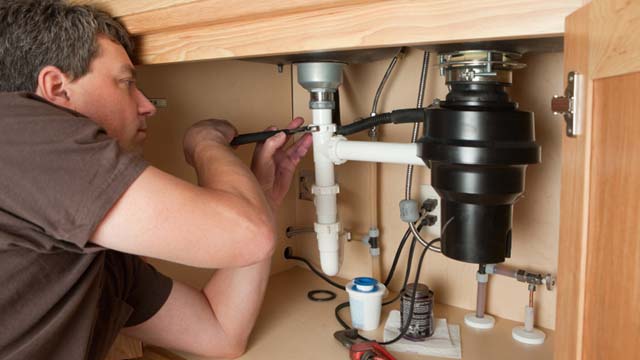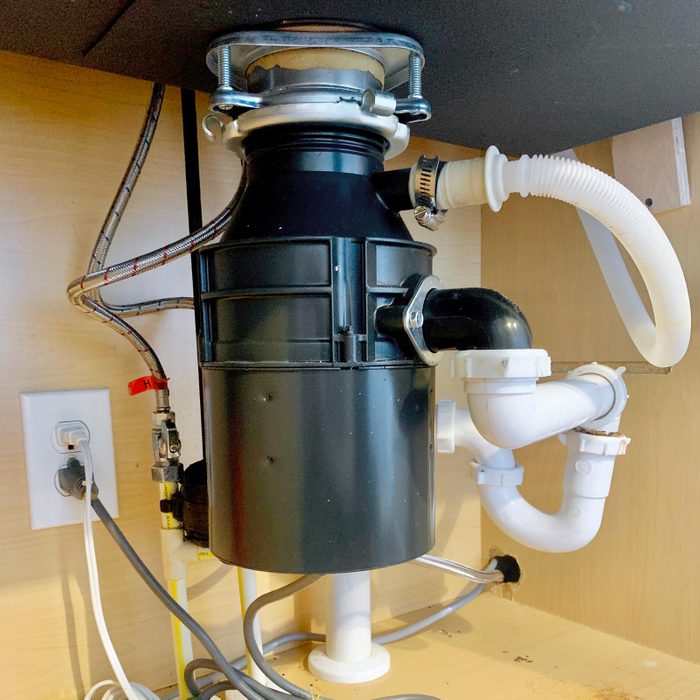Confirmed Ways to Fix a Leaking Waste Disposal Unit
Confirmed Ways to Fix a Leaking Waste Disposal Unit
Blog Article
Everyone is bound to have their private theory involving Why Is My Garbage Disposal Leaking From the Bottom?.

Garbage disposals are necessary kitchen area devices that assist in disposing of food waste successfully. Nevertheless, a leaking garbage disposal can be a frustrating and messy trouble to take care of. Luckily, many leakages can be taken care of easily with a couple of easy steps. In this article, we will certainly talk about just how to repair a dripping garbage disposal properly.
Introduction
Waste disposal unit are installed under kitchen sinks and are created to shred food waste right into smaller items, permitting it to pass through the plumbing system quickly. While these tools are generally reliable, leakages can take place over time as a result of deterioration, loose links, or damages to the system.
Common Root Causes Of Leakages in Waste Disposals
Worn Seals and Gaskets
Seals and gaskets play an essential role in preventing water from leaking out of the garbage disposal. Gradually, these parts can wear away, bring about leaks around the disposal system.
Loose Connections
The connections between the waste disposal unit and the pipes system can end up being loosened with time, creating water to leak out during procedure.
Fractures or Openings in the Disposal Unit
Physical damages to the waste disposal unit, such as splits or openings in the real estate, can likewise result in leakages.
Identifying the Source of the Leakage
Prior to trying to repair a leaking garbage disposal, it is important to determine the resource of the leakage. This can generally be done via aesthetic examination or by carrying out basic examinations.
Visual Inspection
Inspect the garbage disposal unit carefully for any indications of water leakage. Pay attention to areas around seals, gaskets, and connection points.
Evaluating for Leaks
One way to test for leakages is by running water with the disposal system and looking for any kind of visible indications of leakage.
Tools and Materials Needed for Taking Care Of a Dripping Garbage Disposal
Before beginning the fixing procedure, collect the needed devices and products, including a screwdriver, adjustable wrench, plumbing technician's putty, replacement seals or gaskets, and epoxy or patching product for repairing splits or holes.
Step-by-Step Guide to Fixing a Dripping Garbage Disposal
Switch off the Power
Before trying any kind of repair services, ensure that the power to the garbage disposal device is switched off to prevent the risk of electric shock.
Locate the Leakage
Identify the exact place of the leak and figure out the cause.
Tighten up Connections
Make use of a wrench to tighten up any type of loosened connections in between the disposal system and the pipes system.
Change Seals or Gaskets
If the leak results from worn seals or gaskets, remove the old elements and replace them with brand-new ones.
Patching Cracks or Holes
For splits or holes in the disposal unit, use epoxy or a suitable patching product to secure the damaged area.
Testing the Waste Disposal Unit After Repair Service
Once the repair service is total, check the waste disposal unit by running water via it to guarantee that the leakage has actually been dealt with.
Preventive Upkeep Tips to Avoid Future Leaks
To prevent future leaks, it is necessary to perform normal maintenance on your waste disposal unit. This consists of keeping it clean, staying clear of putting non-food items or tough objects down the disposal, and occasionally checking for leaks or other problems.
Conclusion
In conclusion, taking care of a leaking garbage disposal is a fairly simple procedure that can be finished with basic tools and products. By complying with the steps detailed in this article and practicing precautionary upkeep, you can maintain your garbage disposal in good working condition and stay clear of costly repairs in the future.
What to Do About a Leaking Garbage Disposal
A leaking garbage disposal often goes unnoticed until you confront a sopping cabinet, a foul-smelling puddle, or an audible drip-drip-drip from the unit. The fix can be frustrating, too, because the leak can stem from a number of components in the system. Fortunately, with a little sleuthing, you can zero in on the leak and—depending on the exact location—stop the icky oozing and repair the component that caused it. Worst case scenario, if it turns out that the garbage disposal must be replaced, installing a new one is a reasonable do-it-yourself task for those with basic plumbing skills. Read on to keep the cash you’d otherwise hand over to a pro.
Prepare to find the leak
Prior to testing the garbage disposal for leaks, unplug it at the wall outlet and turn off the power from the breaker box to prevent electrical shock. Then insert a watertight sink stopper into your sink drain and wipe the unit dry with a clean cloth. In any handy container, mix a few drops of food coloring into a few cups of water, and pour the dyed water onto the sink stopper to help you locate the leak.
Investigate the source
the top, where the disposal meets the sink drain the side, where the dishwasher hose or main drain pipe connects to the disposal or the bottom of the unit Inspect each of these locations while gliding a light-colored rag over the unit; the dyed water will readily show on the rag and reveal the location of the leak. If a leak isn’t immediately apparent, remove the sink stopper and pour a few more cups of dyed water down the sink drain, then check for leaks again. Leaks near the top of the unit are more likely to show themselves while the sink is plugged, while side and bottom leaks are more noticeable while the sink is unplugged.
The metal sink flange that sits directly inside the sink drain is typically sealed around the top with plumber’s putty (a clay-like sealant) and then secured from under the sink with bolts. If the plumber’s putty deteriorates, or the bolts loosen, the flange can no longer form a watertight seal between the sink drain and the disposal—which could cause a leak at the top of the unit.
To reseal the leaky flange, you must first detach the garbage disposal. Start by loosening the screws securing the main drain pipe to the disposal, then loosen the screws in the metal clamp securing the dishwasher hose to the disposal and detach the drain pipe and dishwasher hose from the disposal. Loosen the screws in the mounting ring that connects the disposal to the metal mounting assembly beneath the sink, then pull down the disposal and carefully set it on a clean, dry surface. Loosen the bolts in the mounting assembly with a wrench, then pull down the mounting assembly and set it near the disposal.

I was brought to that article about The Handy Guide To Fixing Your Garbage Disposal Leaking through an associate on a different web blog. For those who enjoyed reading our blog entry kindly remember to pass it around. Thanks for taking the time to read it.
Go Deal Report this page